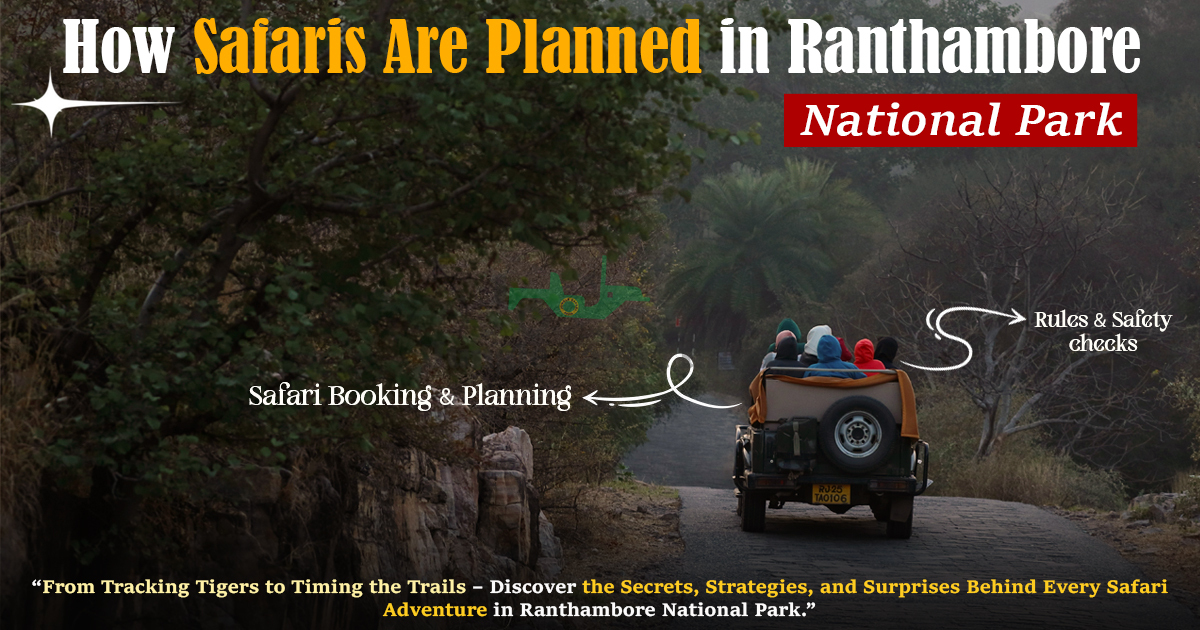In India, many national parks stay closed during the rainy months. This is called the monsoon season. These parks shut down to keep both animals and people safe. During this time, forests get rest, and animals live without disturbance from tourists.
The rain makes the ground slippery, and rivers overflow. Roads inside the parks become hard to use. Also, this is when many animals give birth or take care of their young. Keeping visitors away helps protect them.
By October, the rain stops, and the weather becomes better. Parks open again for tourists. One well-known park that reopens in October is Ranthambore National Park in Rajasthan. People visit here mainly to see tigers and other wildlife.
If you want to enjoy nature and see animals in the wild, October is a good month to plan your visit to Ranthambore.
Why National Parks Close In Monsoon
The rainy season in India lasts for several months, mostly from June to September. This season brings heavy rainfall, which is very important for the forests. The water makes the trees and plants grow. Rivers and lakes inside the forest also get filled, which is necessary for the survival of wild animals.
But at the same time, the monsoon creates many difficulties. The forest paths become slippery and dangerous. Vehicles cannot move properly because the ground is muddy. Some areas may even get flooded, making it impossible to pass through. Trees often fall during storms, blocking the roads inside the park. All these things make it unsafe for tourists and staff.
There is also another important reason for the closure. The monsoon is the time when many wild animals give birth and raise their young. Birds build nests, and animals like deer and leopards look after their babies. If tourists are allowed inside the parks during this time, it can disturb the animals. They need peace and safety for proper breeding. By closing the parks, the government ensures that wildlife remains undisturbed.
So, the monsoon break is not just about safety but also about giving animals and plants the time they need to grow naturally without human interference.
When National Parks Open Again
By the end of September, the heavy rainfall starts to reduce. The skies become clear, and the forest begins to dry. October marks the official opening of most national parks in India. From this time, tourists are again allowed to enter the parks through safaris.
The forests look very beautiful during this season. The trees are green, the rivers are full of water, and the air is fresh. Many birds come back during this time, making the park lively. Deer, antelopes, and other herbivores can be seen grazing in open spaces. Tigers, leopards, and other big animals also start moving around freely after the rains.
Tourists who visit in October get a very special experience. Since the parks have been closed for a few months, animals are more active, and chances of spotting them are higher. Wildlife photographers also prefer this season because they can capture pictures of animals in green surroundings.
For anyone who loves nature, this is the best period to plan visits. The weather is pleasant, and the wildlife is very active, making safaris very enjoyable.
Ranthambore National Park
Ranthambore National Park is located in Sawai Madhopur district of Rajasthan. It is one of the most well-known tiger reserves in India. Many visitors come here with the hope of seeing a tiger in the wild. The park is famous not only in India but also in other countries.
The area of Ranthambore is a combination of dry forests, open grasslands, lakes, and small hills. There are also many old ruins inside the park, including the famous Ranthambore Fort, which is more than 1,000 years old. This makes the park different from other wildlife reserves. Here, you can see both natural beauty and history in the same place.
The park reopens on October 1 every year. After that, safaris start, and tourists can again explore the forest. The park is divided into different zones. Each zone offers different chances of spotting animals. The core zones are the most popular because they have higher chances of tiger sightings.
While the tiger is the main attraction, Ranthambore is home to many other animals. These include leopards, wild boars, sloth bears, jackals, and marsh crocodiles. You can also see many types of deer, like sambar and chital. The park also has hundreds of bird species, which makes it a good place for bird watchers.
The combination of wildlife, forest, and ancient ruins makes Ranthambore National Park a unique destination for tourists.
Ranthambore Safari Booking
The main way to explore Ranthambore National Park is by joining a jungle safari. Safaris are conducted in two types of vehicles: gypsies and canters (larger open vehicles). Each safari is led by a trained guide and driver. The guides know the routes and also help tourists understand the behavior of animals.
For anyone planning to visit, making a Ranthambore safari booking is very important. Tickets are limited, and because of high demand, they are often booked weeks in advance. It is possible to book safaris online, which is the easiest method.
There are two safaris every day: one in the morning and one in the evening. Both are different experiences. In the morning, animals are often more active, and the chances of seeing tigers are higher. In the evening, the forest looks very calm, and tourists can see animals coming to drink water before nightfall.
While booking, tourists can select zones. The core zones usually sell out first because they are more popular for tiger sightings. So, making your Ranthambore safari booking early helps you get the best chances of entering the popular zones.
Without booking in advance, it can be very difficult to get a safari seat, especially in the peak season between October and March.
Tips For Visitors
Tourists should follow some important tips to make their trip safe and respectful:
- Always listen to the guide and follow park rules. These rules are made for your safety and for the protection of animals.
- Do not feed animals or throw food inside the park. This can harm them or change their natural behavior.
- Keep silent inside the park. Loud talking or using mobile phones can disturb the animals and reduce your chances of seeing them.
- Wear simple and natural-colored clothes. Bright colors can disturb animals and also attract insects.
- Always make your Ranthambore safari booking in advance. This will save time and ensure you do not miss the safari.





